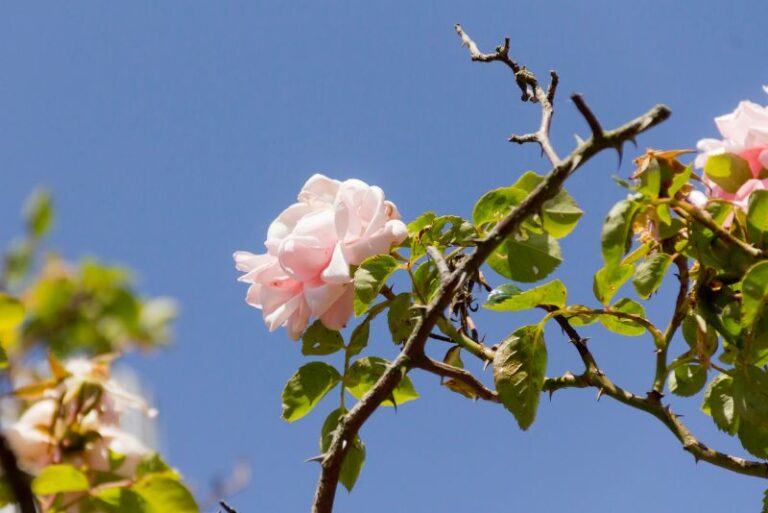The Best Achilleas to Grow: A Gardener’s Guide
Achilleas evoke the quintessential image of a blossoming summer garden with their starry-shaped flowers and feathery foliage. A favorite among horticulturalists and novices alike, these hardy perennials offer much more than just aesthetic appeal. If you’re looking to enhance your green sanctuary, welcome pollinators with open arms, and engage in the satisfaction of low-maintenance gardening, then achilleas are the perfect addition to your floral ensemble.
In this comprehensive guide, we’ll explore the enchanting world of achilleas, discussing the best varieties to cultivate in your garden, the care they require, and the numerous benefits they offer. Whether you’re an avid plant enthusiast seeking to diversify your plant collection or a budding gardener looking for a resilient bloom, this guide is tailored to elevate your achillea experience.
Types of Achilleas
Achillea millefolium (Common Yarrow)

Achillea millefolium or Common Yarrow is the wild ancestor of most garden-grown varieties. It’s a robust, spreading perennial that thrives in full sun and well-drained soil. Common Yarrow is renowned for its medicinal properties and is an excellent option for naturalizing meadows or flower beds due to its carefree nature.
Achillea ‘Moonshine’

For those after a pop of color, Achillea ‘Moonshine’ is a spectacular choice. Its lemon-yellow flower heads contrast beautifully with its silvery foliage, making it an eye-catching addition to any garden. This variety has a more compact growth habit, making it suitable for containers or smaller garden spaces.
Achillea ‘Saucy Seduction’

Achillea ‘Saucy Seduction’ boasts vibrant red flowers that stand out in borders or among other perennials. Like ‘Moonshine,’ it has a compact form, making it an ideal candidate for mixed plantings and rock gardens. Its blooms not only provide a striking aesthetic but also attract butterflies and other pollinators.
Achillea filipendulina (Fern-leaf Yarrow)

Achillea filipendulina, also known as Fern-leaf Yarrow, is distinct with its deeply cut, fern-like leaves and large, flattened flower heads. The variety ‘Gold Plate’ showcases golden-yellow flowers atop tall stems, creating a stunning vertical accent in the garden. It prefers moister soil than other achillea species but is still drought-tolerant once established.
Growing Conditions
Achilleas are generally quite easy to grow but thrive when their preferred conditions are met. These conditions are not overly demanding, which makes them suitable for gardeners of all skill levels.
Sunlight Requirements
Achilleas love the sun! They prefer at least six hours of direct sunlight per day to promote healthy growth and prolific blooming. In areas with extremely hot summers, some afternoon shade can be beneficial to prevent wilt.
Soil Preferences
Achilleas aren’t too picky when it comes to soil, as long as it’s well-drained. They can tolerate a wide range of pH levels, but they grow best in slightly alkaline soil. Amending the soil with organic matter like compost or peat moss can help improve drainage for plants in heavier soils.
Watering Needs
While achilleas are drought-tolerant once established, they appreciate occasional deep watering during prolonged dry spells, especially if the summers are exceptionally hot. Be mindful not to overwater, as they are sensitive to waterlogged conditions, which can lead to root rot.
Maintenance Tips
To keep your achilleas healthy and looking their best, a few maintenance tasks are necessary. However, these tasks are straightforward and don’t require a significant time investment.
Pruning Techniques
Pruning achilleas is typically done in the fall or early spring. Cut back the previous year’s growth to a few inches above the ground. This rejuvenation pruning encourages vigorous new growth and ensures a more compact plant. Pruning can also be carried out throughout the growing season to remove any dead or yellowing leaves.
Deadheading for Prolonged Blooms
Deadheading spent flowers not only tidy up the plant but also encourages a second flush of blooms, extending the flowering period well into the fall. It’s a simple job that can be done by pinching off the old flowers with your fingers or using pruners. This practice also prevents the formation of seeds, which can sometimes lead to self-sowing and an abundance of seedlings.
Dividing for Healthier Plants
Achilleas benefit from division every two to three years to maintain their vigor and to prevent the center of the plant from dying out. Division is best done in early spring as new growth emerges, or in the fall before the first frost. Use a sharp spade to cut the plant into sections, ensuring that each division has both roots and new growth.
Benefits in the Garden
The charm of achilleas extends beyond their delicate appearance. They offer various advantages that make them a valuable addition to any garden.
Attracting Pollinators
Achilleas are magnets for pollinators, particularly butterflies and bees, due to their nectar-rich flowers. Their presence in the garden not only adds motion and beauty but also helps in the pollination of other plants, ensuring a bountiful harvest of fruits and seeds.
Drought Tolerance Advantages
In an age where sustainable gardening practices are increasingly important, the drought tolerance of achilleas is a standout feature. Once established, they require minimal intervention, which can help conserve water and reduce the maintenance demands of your garden.
Companion Planting Benefits
Achilleas make excellent companion plants. Their extensive root systems help to stabilize soil, making them ideal for erosion control. They also work well in a variety of garden styles, ranging from formal to wild, and complement a broad spectrum of plants with their versatile color palette.
Conclusion
Cultivating achilleas is not just about adorning your garden with their ethereal beauty. It’s about fostering a connection with a plant that encapsulates the resilience, charm, and grace of the natural world. With this guide, you can confidently select, nurture, and cherish the best achilleas varieties for a garden that flourishes, not just in the summer, but throughout the seasons. Remember that the joy of gardening lies in the process as much as in the outcome, and there’s no better place to start than with these delightful perennials.
Feeling inspired to enrich your outdoor space with achilleas? Start your horticultural adventure today, and watch as a tapestry of color and vitality unfolds in your garden.






